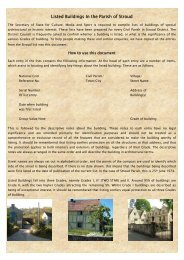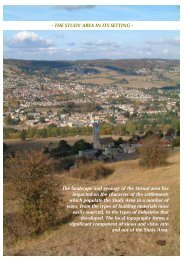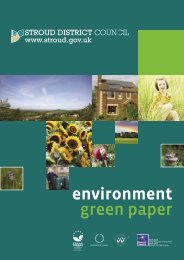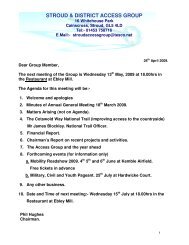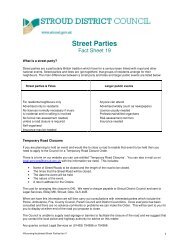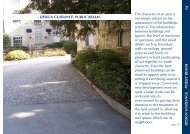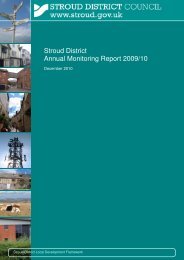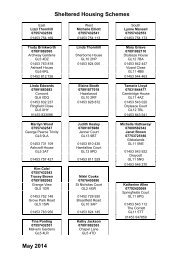CONSERVATION AREA STATEMENT - Stroud District Council
CONSERVATION AREA STATEMENT - Stroud District Council
CONSERVATION AREA STATEMENT - Stroud District Council
Create successful ePaper yourself
Turn your PDF publications into a flip-book with our unique Google optimized e-Paper software.
44<br />
<strong>CONSERVATION</strong> <strong>AREA</strong> <strong>STATEMENT</strong> - Conservation Area No7: FRAMPTON ON SEVERN<br />
After the First World War ended in 1918, housing shortages became a major country-wide crisis: there was an estimated<br />
overall deficiency of 600,000 thousand dwellings. In response, the provision of housing was made a primary<br />
consideration in town planning, but it was apparent that developments by private sector builders could not make up<br />
the shortage. The Housing and Town Planning Act (the Addison Act) was introduced in 1919 to help remedy the<br />
situation. The Act allowed the provision of state subsidies for local authorities to aid in the cost of slum clearance and<br />
the building of low cost housing.<br />
During the years of the First World War, Barry Parker and Raymond Unwin, who later became Chief Architect at the<br />
Ministry of Health, laid out ideas stemming from Ebeneezer Howard’s idealistic Garden City Movement, proposing a<br />
new standard of local authority working class housing. These recommendations created the blueprint for local authority<br />
housing for the next twenty years and more.<br />
They advocated not more than 30 houses per hectare, with their own gardens, built in small terraces or cul de sacs,<br />
in a well laid out estate, each house to have a large living room with a sunny aspect, a bathroom and indoor lavatory<br />
and a kitchen with a good sized larder.<br />
The Oval was built on the medieval Oatfield just before the Second World War by <strong>Stroud</strong> Rural <strong>District</strong> <strong>Council</strong>, utilizing<br />
the highly successful basic principles of Unwin’s ideas. The majority of the houses in the Oval have now passed out<br />
of local authority ownership following the ‘right to buy’ schemes of the 1980s.<br />
The Buildings in Sub Area 4: The Oval<br />
Buildings and materials<br />
<strong>Stroud</strong> <strong>District</strong> <strong>Council</strong>



